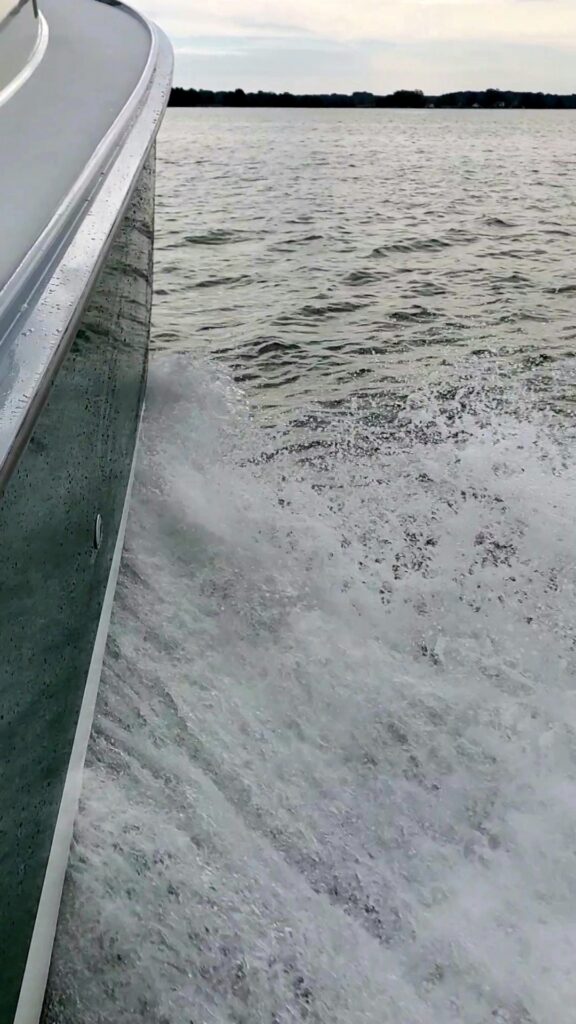Design Considerations
As previously discussed here, there are countless types of craft, and hulls, on the water. And many different uses. In our sportfishing world, hulls have evolved along with technology. At the highest level, our sportfishing hulls are high-performance machines pushing performance limits and doing so while maintaining levels of elegance and beauty. But when pushing the limits, issues can arise if not careful. Sometimes, the design, and/or the execution of the design, can go wide of the goalposts, resulting in some unpredictable and undesirable behaviors. Here are some phenomena which can result from faulty design parameters.
Different sizes, powering options, uses and speeds call for proper hull form. Let’s focus on mid- to high-speed hulls. Most new sportfishing craft, either outboard powered or more traditionally inboard diesel powered, are planing craft. Speeds for outboard-powered boats can exceed 60-plus knots. For our larger yachts, with diesel engines and submerged propellers, top speeds are typically above 40 knots, with some flirting with the 50-knot mark. Bad behavior can include anything from lower-than-expected performance and sluggish response and handling, all the way to downright dangerous running.
What are some of these nasty characteristics? As a hull transitions from displacement to planing mode, there are several design and build variables that can become serious. Weight and LCG (longitudinal center of gravity) are critical the faster we go. A planing hull can exhibit multiple dynamic instabilities ranging from being a pain in the rear to being catastrophic. These can include relatively common phenomena like porpoising or chine walking—which both can be mostly innocuous if subtle enough, but when more extreme, can render the boat uncontrollable.
Another example of undesirable behavior is a non-oscillatory heel. This occurs when the boat weighs too much for the size of the running surface, or if LCG is too far forward.

Porpoising typically results from a too-far aft LCG. The dynamic lift and lift due to buoyancy cannot stabilize. This results in the bow cyclically rising and dropping (some call this bouncing). The magnitude can be small (easily dealt with by adjusting the tab or drive angle) but can also be extreme (with control rendered impossible and ride quality unacceptable for passengers).
Chine walking is normally seen on smaller hulls and can result at higher speeds when a hull is very light, with not enough hull bottom stabilized in the water. In this case, slight variation in a sea can induce a heel angle, but the chines are not submerged enough to resist setting off an unsteady rolling back and forth. This can easily result in loss of control. Chine walking isn’t seen as much in recreational boats as they aren’t typically built light enough for the given running surface. It’s seen more on light, high-speed craft with very specific missions. Race boats and patrol craft can be examples. Both instabilities are oscillatory and can either be constant or continue to get worse as speed increases.
Another example of undesirable behavior is a non-oscillatory heel. This occurs when the boat weighs too much for the size of the running surface, or if LCG is too far forward. I have been on flybridge boats when this occurs and it can be quite scary. The hull will lean over and not respond to the helm. Sometimes it is constant, and sometimes it continues to get worse. The main cause here is too much of the forward, curved buttocks being wetted. When the flow follows the curved shape (as opposed to mostly flat aft buttocks) a negative pressure is created, pulling down on that side of the hull. The Coanda effect is in place, which describes how fluid flow remains attached around a curved surface. This is demonstrated by putting the back side of a spoon in the flow from a faucet. In extreme cases, this phenomenon can combine with the bow being sucked down. The only way to cause the suction to release in these cases is by pulling back on the throttles and slowing down.
Some of these symptoms can be caused by other factors. Any asymmetry in the hull form can cause odd behavior. This can include actual hull geometry (think pre-release in an FRP, or Fiber Reinforced Plastic, hull part) or improperly placed appendages. Both of which cause irregularities in the flow across the bottom. Also, multiple instabilities while underway can combine, making it even harder to troubleshoot the problem. Imagine an undesirable heel combined with porpoising, resulting in a corkscrew motion.
There are other dynamic instabilities with multiple potential causes. If a hull is exhibiting any of these, it is important to identify the root cause. This can be tricky. So it is important to test after making just one modification, then move on to the n xt one. This way, the main cause can be recognized. Often, testing is done by changing several factors at once due to cost and schedule constraints. This isn’t recommended.
No one wants to see a boat behaving inappropriately. It results in unhappy customers and it’s not good for the industry. Fortunately, the number of boats which act out is small and getting smaller (especially in our sportfishing fleets currently on the water). Knowing the right design practices and understanding the hydrodynamics occurring are vital in ensuring a predictable, superior running hull.

About the Author: “Chris Swanhart transitioned from the aerospace sector to the marine industry early in his career, embarking on a journey that has spanned over two decades. With an unwavering commitment to fostering enduring relationships with renowned yacht builders worldwide, he has overseen numerous groundbreaking projects. Chris’s extensive portfolio encompasses the management of various new designs and builds, ranging from patrol and rescue vessels to production boats and luxurious custom sportfishing yachts. His expertise lies in crafting designs that prioritize cutting-edge high-performance hydrodynamics, innovative hull forms, and robust structures. Chris has been a contributor for InTheBite Magazine since 2020 and can been read in every issue with his Behind The Design article.”
This article appeared in a previous issue of InTheBite Sportfishing Magazine. If you like this content you’ll love reading InTheBite. Subscribe Today.










